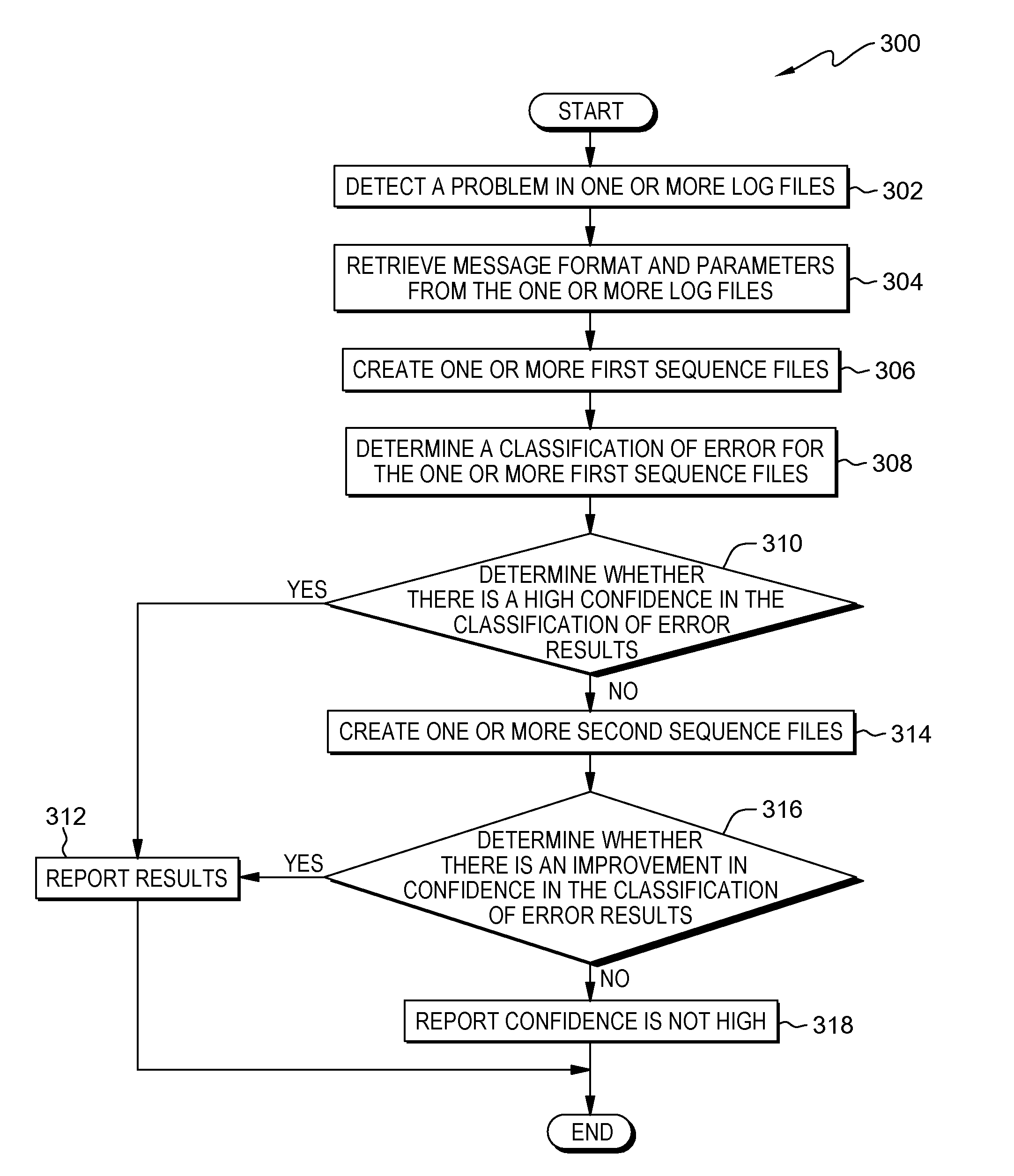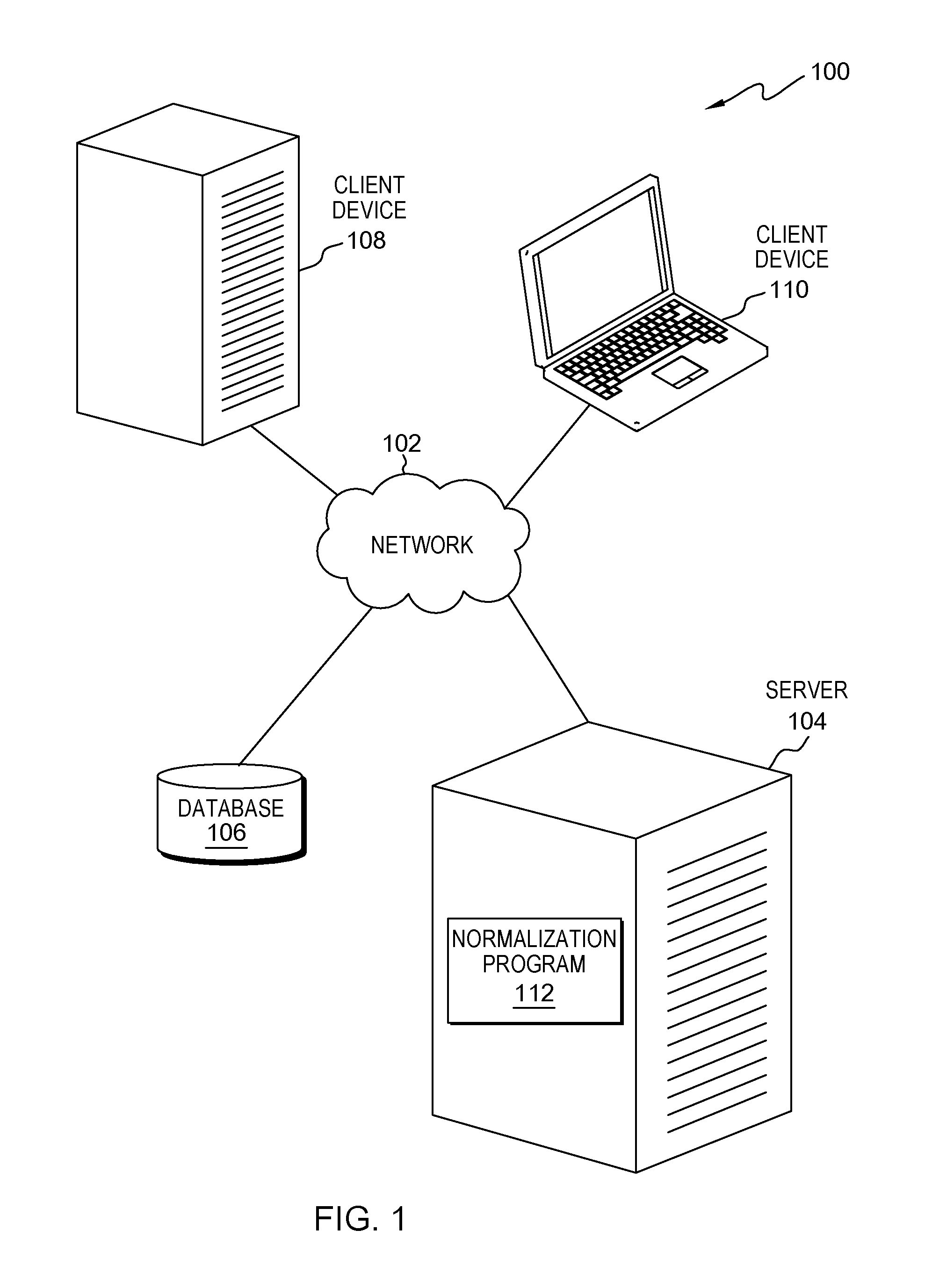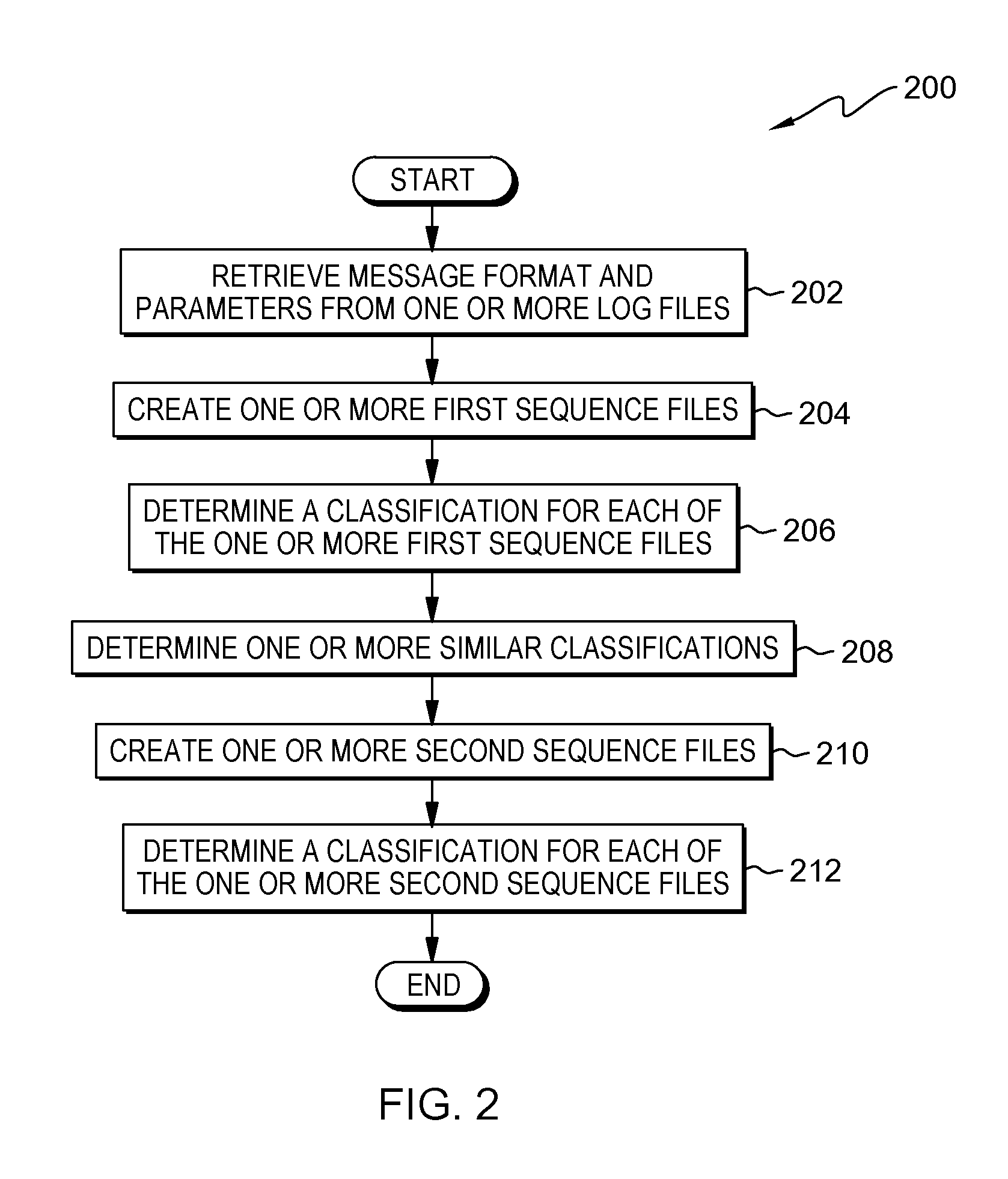Two stage log normalization
a log normalization and two-stage technology, applied in the field of software system problems, can solve the problems of low confidence in the classification of errors for one or more second sequence files, low confidence in the plurality of existing trained data, and low similarity between, so as to improve machine learning and automatic noise removal. , the effect of high confiden
- Summary
- Abstract
- Description
- Claims
- Application Information
AI Technical Summary
Benefits of technology
Problems solved by technology
Method used
Image
Examples
Embodiment Construction
[0009]Implementation of embodiments of the present invention may take a variety of forms, and exemplary implementation details are discussed subsequently with reference to the Figures.
[0010]The present invention will now be described in detail with reference to the Figures. FIG. 1 is a functional block diagram illustrating a data processing environment, generally designated 100, in accordance with an embodiment of the present invention. FIG. 1 provides only an illustration of one implementation and does not imply any limitations with regard to the environments in which different embodiments may be implemented. Many modifications to the depicted environment may be made by those skilled in the art without departing from the scope of the invention as recited by the claims. FIG. 1 includes network 102, server 104, database 106, and one or more client devices, such as client device 108 and client device 110.
[0011]In one embodiment, network 102 is the Internet representing a worldwide col...
PUM
 Login to View More
Login to View More Abstract
Description
Claims
Application Information
 Login to View More
Login to View More - R&D
- Intellectual Property
- Life Sciences
- Materials
- Tech Scout
- Unparalleled Data Quality
- Higher Quality Content
- 60% Fewer Hallucinations
Browse by: Latest US Patents, China's latest patents, Technical Efficacy Thesaurus, Application Domain, Technology Topic, Popular Technical Reports.
© 2025 PatSnap. All rights reserved.Legal|Privacy policy|Modern Slavery Act Transparency Statement|Sitemap|About US| Contact US: help@patsnap.com



